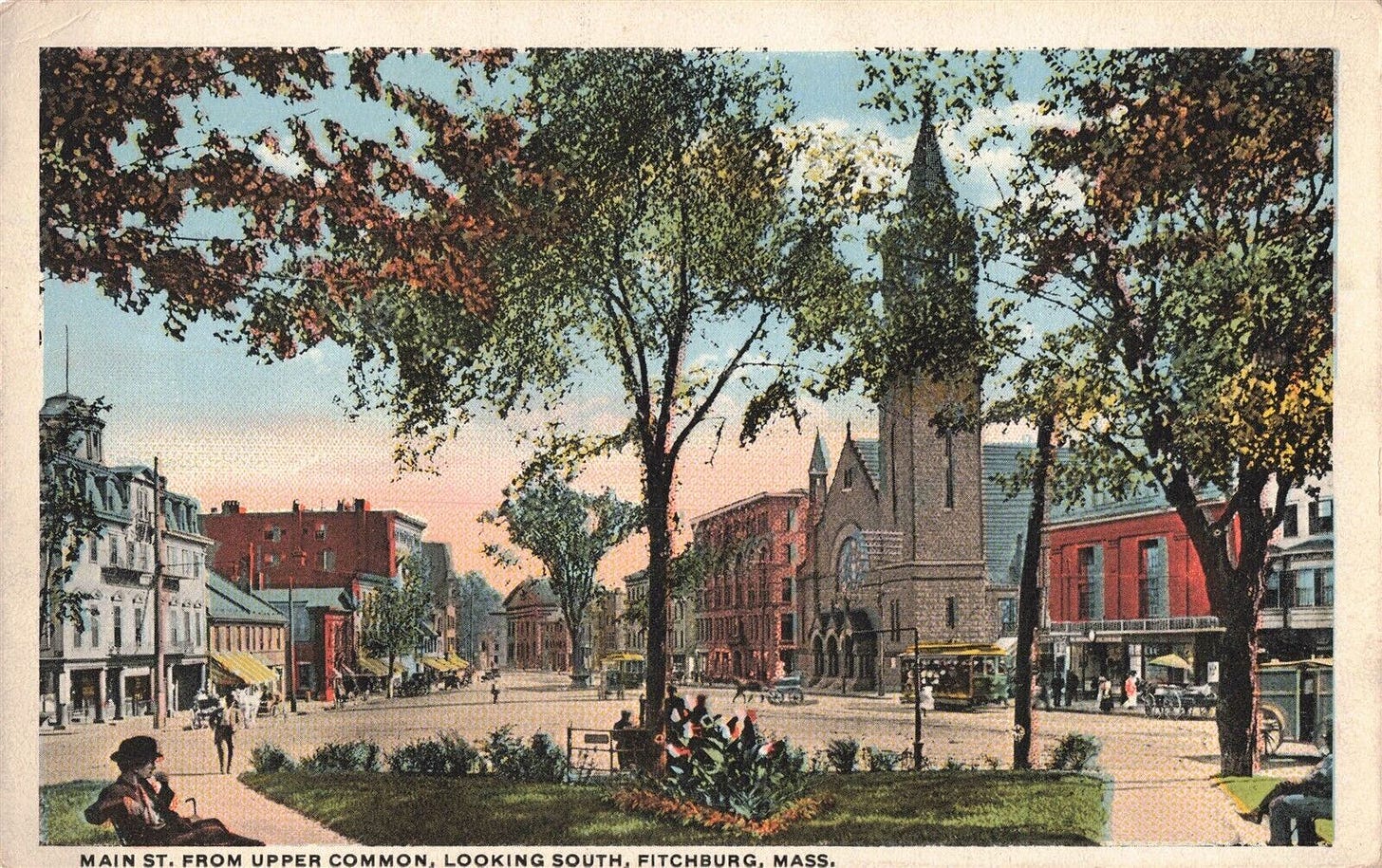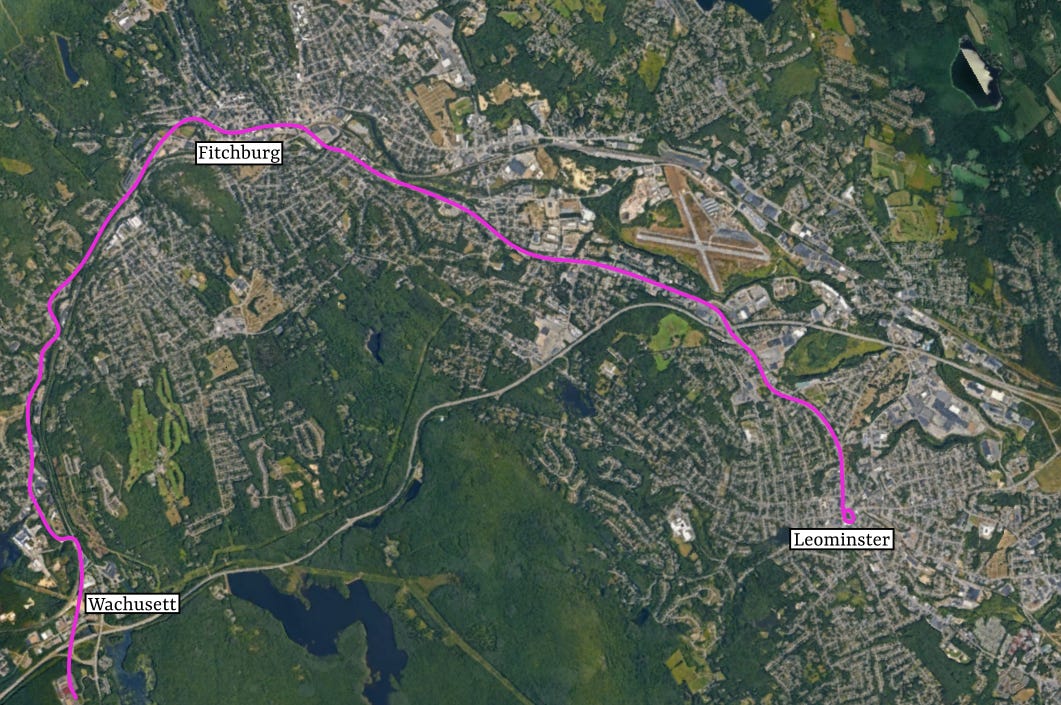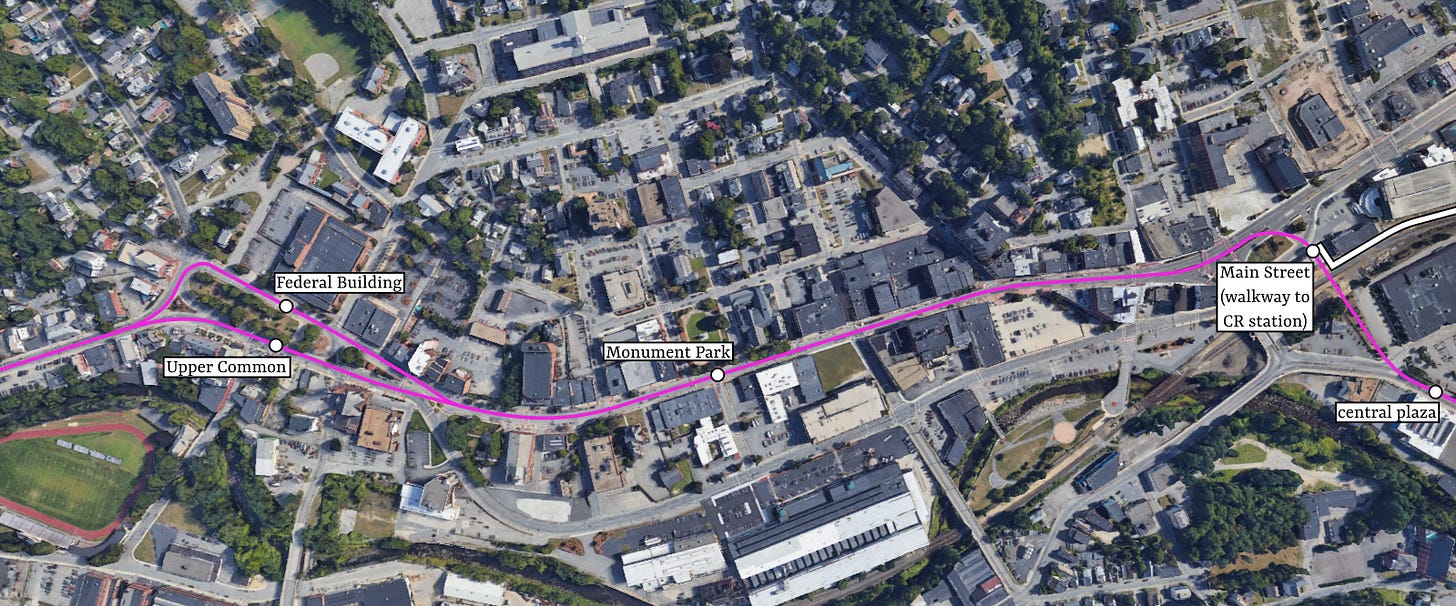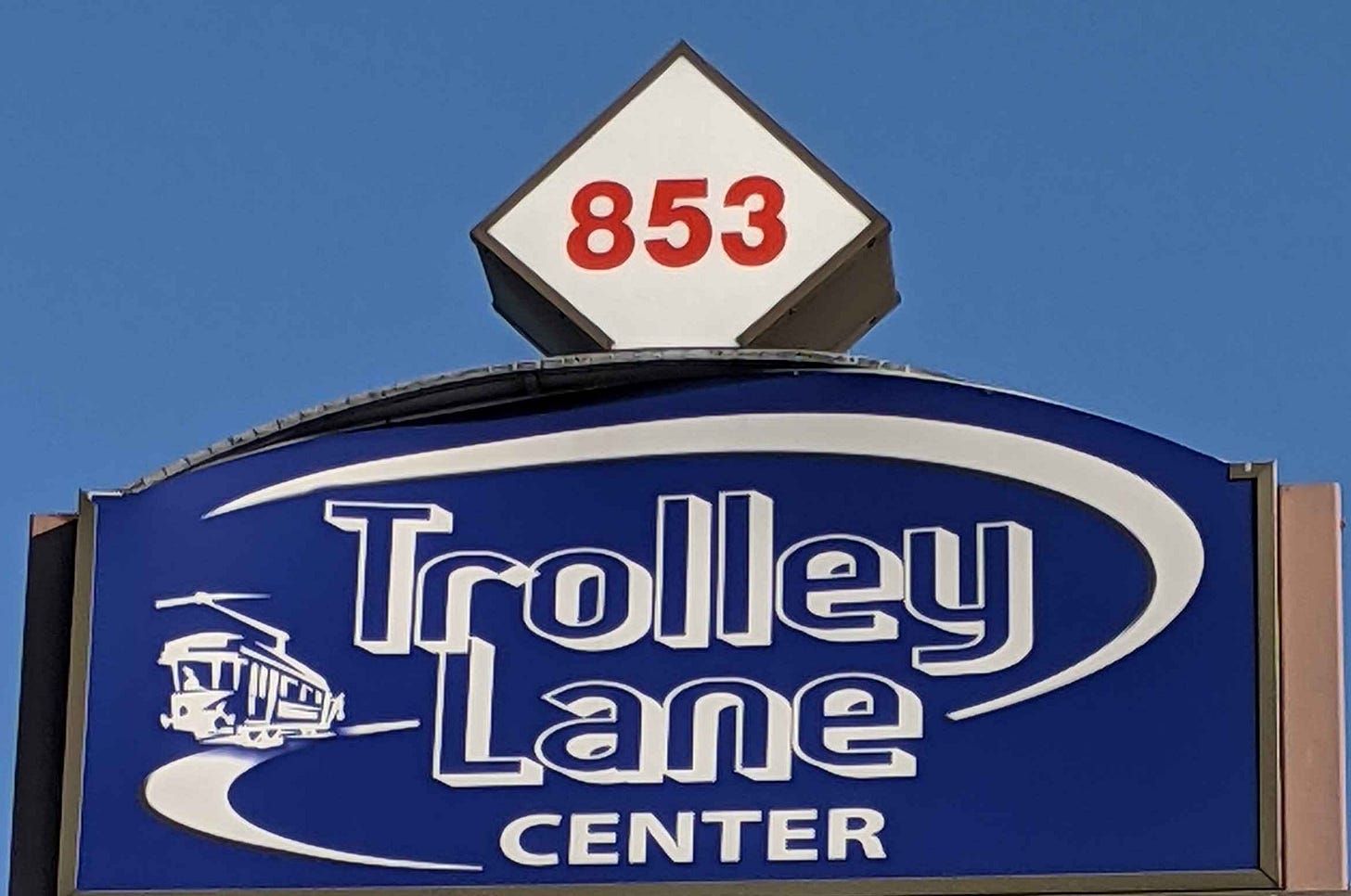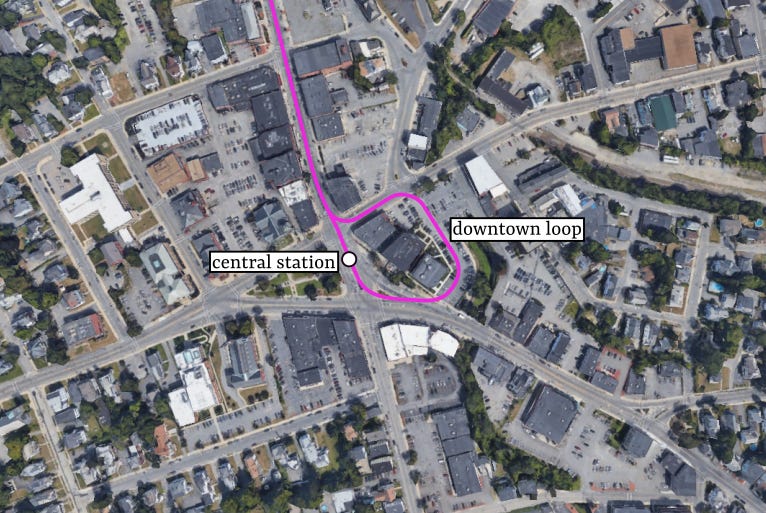What if the Trolleys Came Back?
Exploring the possibilities of a street-running light rail line in Fitchburg and Leominster
An underappreciated aspect of American history is how widespread rail transportation once was. Towns and cities were linked together by steam trains, while electric streetcars and interurbans transported riders through and between even small cities. Even Fitchburg and Leominster had its own extensive network of trolleys that disappeared in the postwar era.1
As urbanists seek to build more sustainable cities, we have gained a new appreciation for these long-neglected modes of transport. Is it possible street-running rail could come back to Fitchburg? What would that look like?
A single route could connect the downtown areas of Fitchburg and Leominster as well as two Commuter Rail stations in Fitchburg, along with numerous bus stops and commercial areas. This route would run mostly along surface streets and use light-rail rolling stock. In this article I will take you along this route and explore how it can transform the city around it.
Our light rail line begins at its western end near Wachusett station. Just nearby is the terminal station at Great Wolf Lodge, providing safe transportation to resort guests and workers alike. The park already warrants its own bus route for park workers, so it isn’t far-fetched to envision the terminal being popular among commuters. Visitors seeking amusement might be reminded of the defunct Whalom Park, another amusement center historically linked to the city with trolleys.
Trolleys continue along the Nashua River, linking industrial areas and isolated neighborhoods. Workers from the city commute by streetcar to offices and factories in historic mills.
Care is taken to obstruct as little car traffic as possible. The trolley tracks depart from River Street along Wallace Road to avoid the busy Route 12 rotary. They rejoin near Independent Cleaners, where passengers can interchange for busses to Cleghorn and Park Hill Plaza.
The light rail line passes right through the heart of downtown Fitchburg. This has great potential for the district and the city as a whole.
Currently, the Main Street neighborhood is a shadow of its former self. While it features beautiful historic buildings and a tight urban grain, it has failed as a commercial area. Most of its storefronts are empty, the Johnsonia lot form a hole in its heart. Positive changes have been made to revitalize the area, such as converting Main Street to two-way traffic, but more will have to be done.
This is where the benefits of a trolley line come in. Streetcar routes “have an excellent track record of being a catalyst for positive urban change” within cities.2 They tend to attract a broader group of riders than just busses, and act as a ‘pedestrian accelerator’ bringing tourists and townies to traverse the commercial zone on foot. The result is the rejuvenation of Fitchburg’s downtown.
Stops on each side of the Upper Common align with current bus stops and bring riders to businesses near Rollstone Boulder and to the post office. A stop by Monument Park connects to the refurbished library, the courthouse, senior center, and more businesses on the strip. A Main Street station connects riders on the rail line to the busy Fitchburg Intermodal MBTA and MART station, where a separate right-of-way avoids the traffic on Water Street Bridge. Finally a stop at the Central Plaza mall gives shoppers at Market Basket another option for bringing their groceries home, as well as linking to other strip mall stores and bus routes.
The line continues towards Leominster along Water Street, a locally famous trolley route. Many businesses currently accessed mainly by car now benefit from new pedestrian shoppers and transit commuters. Neighborhoods in South Fitchburg are linked together with both cities.
Route 12 is fortunately wide enough to accommodate lanes for both trolleys and cars. A redevelopment of this road as part of the light rail project could end up significantly improving traffic between Fitchburg and Leominster as cars are taken off the road by transit riders. The inhospitable state highway can become a green transit corridor, drawing new business from travelers between the two cities.
The trolley line terminates in the heart of Leominster, passing businesses on main streets and ending in a loop by the common. A central station connects to bus routes throughout the town.
Leominster is already a revitalizing city, and the addition of a new trolley line can only aid its appeal. However the extension of a streetcar route into central Leominster also has a lot of practical value: Rail service would be brought to the urban center for the first time since 1968.3 This dense and thriving downtown area would be brought closer together with Fitchburg and by extension the rest of the region.
This kind of case study shows us what was lost as we rebuilt our cities in favor of car dependency. Downtown shopping districts have suffered as motorists prefer strip malls with ample parking. Urban factories have been shuttered in favor of industrial parks out in the sticks. Traditional neighborhoods where one can walk to school or the corner store have declined in favor of overbuilt cul-de-sac developments. Yet Fitchburg and Leominster still have good bones. With some effort they can become good, walkable, livable cities.
I really do not expect our city to rebuild even this one trolley line any time soon. Considering the benefits however, maybe we ought to.
Thank you to my friend and transit enthusiast Lori for mapping out the proposed route.
Fitchburg and Leominster Street Railway, NCS - https://www.nashuacitystation.org/history/fitchburg-and-leominster-street-railway/
Streetcars, RPR Consulting - https://www.railwaypreservation.com/vintagetrolley/vintagetrolley.htm
Leominster Station, NCS - https://www.nashuacitystation.org/station/massachusetts/worcester/leominster/leominster/gallery/



